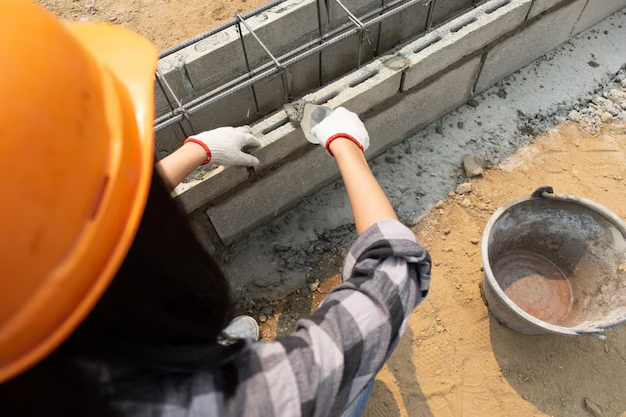5 Signs Your Home Needs A Foundation Repair
A solid foundation is the backbone of any home. It provides stability, and support, and safeguards the entire structure from potential damage. However, foundations are flexible, and over time, they can develop issues that compromise the integrity of your home.
This article will explore five telltale signs that your home’s foundation might need repair. By being aware of these indicators, you can proactively address any underlying problems before they escalate into more severe and costly issues.
1. Cracks in Walls and Floors
Cracks in your walls and floors are among the most obvious signs that your home’s foundation is in distress. Horizontal cracks in walls, vertical cracks in corners, and cracks around windows and doors are all potential red flags. Even hairline cracks in your floors can indicate a more significant problem brewing beneath the surface.
These cracks can stem from various factors, such as soil movement, settlement, or even hydrostatic pressure. While some cracks may be superficial, others can signify serious structural issues that require immediate attention.
In such cases, you may need to seek help from a commercial company that offers pier and beam foundation repair to address the underlying problem and restore the structural integrity of your home. It’s crucial to have a professional evaluate the cracks to determine their severity and underlying cause.
2. Sticking Doors and Windows
Have you noticed that some doors and windows in your home are becoming increasingly difficult to open and close? This could be a sign that your foundation is shifting or settling unevenly. As the foundation moves, it can cause the frames of doors and windows to warp or become misaligned, making them stick or jam.
While sticking doors and windows can sometimes be caused by minor issues like humidity or paint buildup, persistent problems should not be ignored. If you’ve tried lubricating the hinges and adjusting the frames to no avail, it’s time to consider the possibility of a foundation issue.
3. Uneven Floors
Imagine walking across your living room and feeling like you’re on a rollercoaster ride – that’s a telltale sign of uneven floors. Visible slopes, dips, or gaps between the floors and baseboards are all indicators that your foundation may be shifting or settling unevenly.
Uneven floors can be caused by various factors, including foundation settlement, moisture issues, or even wood rot. Not only are they unsightly, but they can also pose tripping hazards and make it difficult to move furniture or appliances around. If left unchecked, uneven floors can lead to more severe structural problems down the line.
4. Leaning or Tilting Chimneys
A leaning or tilting chimney is a sight that should instantly raise alarms. This visible sign of foundation distress is often caused by settlement or shifting of the soil beneath the foundation. In some cases, it can also be the result of structural defects or erosion around the chimney’s base.
A leaning chimney is not just an eyesore; it can also pose serious safety risks. If left unchecked, it could potentially collapse or cause fire or gas leaks. If you notice your chimney leaning or tilting, it’s crucial to have a professional inspect it promptly to determine the underlying cause and recommend the appropriate course of action.
5. Exterior Cracks or Gaps
While interior cracks are often the most noticeable signs of foundation issues, don’t overlook the exterior of your home. Cracks in brick or stucco walls, gaps around windows or doors, and cracks in concrete driveways or patios can all be indicators of foundation problems.
These exterior cracks or gaps can be caused by various factors, such as soil movement, erosion, or structural issues. Not only do they detract from your home’s curb appeal, but they can also allow moisture to seep in, potentially leading to further damage and costly repairs down the line.
Closing Thoughts
Ignoring the signs of a failing foundation can have severe consequences, both structurally and financially. As you make yourself vigilant and address any potential issues promptly, you can protect your home’s integrity and prevent more extensive damage from occurring. Remember, a solid foundation is the key to a safe, stable, and long-lasting home.







